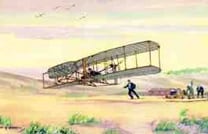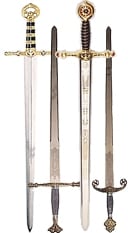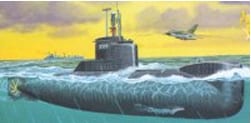Unknown Source of Strength
Humans have been using nickel for about as long as they have been producing metal wares. A relatively plentiful element — the 24th most abundant on earth — nickel is found in metal ore deposits throughout the world. The ancients prized these ores as a source of metals with desirable properties, such as strength and flexibility, and used them to make everything from coins to knives, axes and weapons. However, the desirable traits of these metal alloys were often attributed to the presence of copper or iron. In fact, archaeologists have discerned from ancient metal artifacts that the ‘iron’ of early metal-using societies was actually a mixture containing from 5 to 26 percent nickel.
Long before nickel was isolated, the ancient Chinese developed a material called paitung (also called paktong or tutenag) that was prized for its silvery luster and strength. According to Chinese manuscripts, paitung was used as early as the third century A.D. in weapons, coins and works of art. Paitung is believed to have contained mainly copper and nickel with small amounts of zinc and tin.
In Europe as well, nickel found its way into alloys unbeknownst to the blacksmiths and smelters of the time. Nickel alloys were used to produce plate and chain armors during the Middle Ages, and the relative abundance of nickel-containing ores made it an inexpensive way to add a fine sheen to coin currency. But it wasn’t until nickel’s discovery in 1750 that this common metal additive was isolated and understood.
Devil of a Metal

Mining activity in the Saxony region of Germany eventually led to nickel’s discovery. In 1750 copper smelters in Saxony uncovered a peculiar copper ore that was slightly lighter in color than usual. When processed and refined, this ore yielded an unusual form of copper that was particularly bright and silvery. This strange form of copper was also found to have distinctly different material properties. It was extremely hard and could not be made malleable despite the repeated attempts of the smelters. The new metal became known as Kupfernickel which roughly translates to “copper with the Devil in it.” The composition of this alloy was in fact very similar to the paitung of ancient China.
Nickel — the mysterious component of Kupfernickel that gave it these distinctive properties — was finally “discovered” and isolated from a mineral called niccolite by the Swedish mineralogist Baron Axel Frederik Cronstedt in 1751. The Baron, like the Saxon smelters, had first expected to extract copper from this mineral, but instead his procedure yielded a strong, white metal. Unable to compare the material with any known metal, the Baron determined that he had isolated the enigmatic component of Kupfernickel and named the new metal “nickel” after the Devil himself, “Old Nick.”
Nickel and Dimed
Both modern and ancient societies have used nickel to add luster and to reduce weight in coins and to increase their resistance to corrosion and wear. But the practice of adding nickel to coin alloys became more common as nations began to convert to floating exchange rate systems in which the value of the physical material in a coin no longer had to match its face value. As currency exchange ceased to be linked to the gold and silver standards, Switzerland became the first of many modern nations to employ nickel in coins. The first pure nickel coin was issued by Switzerland in 1881, with Austria and Hungary both following suit in 1893.
In the late 1850’s the United States added nickel to both its penny and five-cent piece, which previously contained mainly copper and zinc (bronze). The word “nickel” became a popular term for the five-cent piece itself, despite the fact that the majority of the coin was copper (the U.S. nickel coin of the 1800s contained 75 percent copper and 25 percent nickel). The coin was in high demand as it was a convenient denomination for many everyday items such as beer and cigars. The advent of slot machines and the ubiquity of nickel fares in buses and subways also helped to spur on the popularity of this coin. It is estimated that by 1958 the United States had issued over 4 billion nickels.
From Meteors to Machines
Even a century after the element nickel was isolated, scientists and engineers had not fully exploited its unique material properties. Nickel is a transition metal that forms alloys with a host of other transition metals such as copper, zinc, iron, silver, cadmium and chromium. It is both strong — it resists fracture under high stress — and ductile — it bends rather than cracking under stress. This is a valuable combination of properties. Engineers seek this combination of properties when designing structures like bridges, which need to withstand heavy loads but also bend under pressure rather than cracking.
Tales of such miracle materials have been passed down through history. The legendary sword blades of ancient Damascus and Arabia were widely known for their extreme strength and hardness. Holy stones such as the black stone of the Kaaba at Mecca were said to have magical properties, probably magnetism. These famed weapons and holy relics are composed of iron that fell from the sky in meteors. This meteroic iron often contains large amounts of nickel. The ancient weapon-makers who crafted their blades out this had stumbled upon a primitive, high-strength, rust-resistant stainless steel alloy. It would be centuries before the science behind these magic materials would be explained.
In the 1700s, as the Industrial Revolution dawned first in England, and then in continental Europe and the United States, the development of industrial equipment and steam engines in particular spawned a search for stronger materials than those currently available. Early material scientists developed steel alloys to fuel this need. Steel is produced when iron is combined with small amounts of carbon, which helps to stabilize and strengthen iron’s crystal structure. Adding small amounts of other elements such as zinc, chromium and nickel increase strength, ductility, corrosion resistance and finish of steel.
It was half a century after nickel’s discovery that Michael Faraday — also famous for his discovery of electromagnetic induction and Faraday’s Law, the foundation of modern field theory — first proposed that nickel be added to steel to enhance its material properties. In a letter to Professor de la Rive of the Royal Institution in 1820 he wrote, “We have been induced by the popular idea that meteoric iron would not rust, to try the effect of nickel on steel and iron.” Despite initial failures, Faraday was able to successfully alloy small amounts of nickel with steel, producing materials that were stronger yet still malleable and workable as ordinary steel. Work continued by Swiss metallurgist J.C. Fischer in 1824 resulted in successful imitations of meteoric iron.
These early discoveries laid the foundation for advanced stainless and structural steels made of alloys with increased corrosion resistance and strength. Nickel-fortified steel armor was soon used in warships during the mid- to late-1800s. Michael Faraday’s investigations into the electrochemistry of various metals — their willingness to interact with electrical currents — increased nickel’s uses. By the 1840s, metallurgists were able to plate nickel into other metal surfaces by using an electrical current to attract dissolved nickel salts and nickel ions to the surface of metal electrodes. These coatings provided wear and rust resistance for numerous products ranging from cooking utensils to plumbing fixtures.
Fanning Flames of War
During World War I the value of nickel increased dramatically due to newfound demands for high-strength stainless steel for guns, ammunition and vehicles. Nickel was now not only an important component in currency but also a valuable natural resource sought by all warring factions. In 1916, a German submarine ran life-threatening risks while attempting to break through the British blockade in order to obtain a small load of Canadian nickel. The successful mission was celebrated in the same manner as a traditional military victory; such was the value and importance of nickel to the German war machine. At the peak of wartime production, Canada, the world’s premier source of nickel, produced approximately 92 million pounds of nickel a year.
The armistice and later the Great Depression caused the nickel industry to take a momentary dive between the World Wars. Production of military equipment was down dramatically as the industrial world refocused its efforts on consumer goods. Advancements in the combustion engine during the 1930s, however, helped to keep demand high for certain nickel steels desired for their ability to resist failure at high temperatures. This property was crucial in parts such as cylinder heads and pistons that experience explosive pressures at very high temperatures.
The onset of World War II increased the demand for steel and nickel once again. During the conflict the production of nickel alloys equaled the production total over the previous 54 years. Canada in conjunction with the British government essentially regulated the world’s nickel market during World War II and even placed restrictions on its use in non-essential, consumer goods. This severely limited the amount of nickel available to Axis powers, and nickel ore deposits soon became a strategic concern to the Germans as a result. Military operations were launched to bring nickel stores under German control. The Petsamo nickel mine in Finland, previously brought to a standstill by the invading Soviet army, was captured by the Germans in 1940 and became a major source of steel-strengthening nickel for the German war.
Airplanes, Jet engines and Beyond

In 1903 Orville and Wilbur Wright spurred a transportation revolution with the flight of their self-propelled biplane, the first of its kind, in Kittihawk, North Carolina. World War I sped the development of powered aircraft, but pushing engineering barriers would not have been possible without the development of new aerospace materials for structural and engine components. To reduce burdens on propeller engines, increase speeds and boost maneuverability airplane structures required high-strength, lightweight alloys. The high rotational speeds and temperatures of aviation engines also depended on alloys that could resist deformation and failure at high temperatures with a minimum of additional weight. Aluminum alloys with nickel additives and traditional nickel steels fed this need.
New feats in speed and power came from the development of the first jet engines during World War II and into the 1950s. These new engines created high-pressure gas jets by using rapidly spinning turbines to compress air and eject it through exhaust nozzles. The fast-spinning turbines reached high temperatures and stresses and once again required new metal alloys to withstand these forces. Nickel was used as a strengthening agent in many of these alloys. Similar needs for stress and temperature resistance prompted the use of nickel-containing alloys in the burgeoning space race. Rocket engines have similar engineering demands as jet engines due to the high temperature and pressure of exhaust gases, and they also must endure extreme vibration caused by the combustion of rocket fuels. The early space industry used nickel in conjunction with other high-strength materials like titanium to create new classes of superalloys capable of withstanding the turbulence of space flight.
Nickel Today
Recent studies have shown that nickel processing and refinement can produce harmful health consequences. Research during the 1960s showed early indications that nickel compounds such as nickel carbonyl could cause lung tumors in laboratory rats. Later studies conducted during the 1980s by the United States Environmental Protection Agency (EPA) demonstrated that prolonged exposure to high levels of nickel refinery dust, nickel carbonyl or nickel subsulfide — all direct byproducts of nickel refining and metals processing — could cause cancer. Inhalation of nickel-containing fumes from welding of stainless steel was also found to be associated with increased cancer risk. This led to federal regulations limiting the amount of certain nickel compounds acceptable in the workplace and the environment.
If inhaled in certain forms at high concentrations over a long enough period of time, nickel is indeed carcinogenic to human beings. Modern industrial hygiene practices have helped to curb these nickel-induced health complications.
By far the most common health-related effect of exposure to nickel is an allergic reaction. Some people are genetically predisposed to becoming sensitized to nickel if they directly handle the metal often enough. Once sensitized, dermatitis — an allergic reaction on the skin — can occur at the site of contact, causing rashes and, in extreme cases, asthma attacks. An estimated 5 to 10 percent of the population is susceptible to nickel allergies.
Though nickel is used primarily in the steel industry to strengthen and add corrosion resistance to high-quality steels, it has found its way into a host of everyday objects. Nickel-containing household objects include faucets, kitchen utensils, appliances, rechargeable batteries (nickel-cadmium or Ni-Cad variety), jewelry and of course coins. Like the ancients, most of us probably use nickel products without even knowing it.
Sources Include:
-Agency for Toxic Substances and Disease Registry (ATSDR). 1997. Toxicological profile for nickel. Atlanta, GA: U.S. Department of Health and Human Services, Public Health Service.
-Aitchison, Leslie. A History of Metals. London: MacDonald and Evans Ltd., 1960.
-Encyclopedia of Toxicology. ed. Philip Wexler. Boston: Academic Press, 1998.
-Gmelins Handbuch der Inorganischen Chemie. Berlin: Springer-Verlag, 1924.
-Howard-White, F. B. Nickel: an Historical Review. New York: D. Van Nostrand Company, Inc., 1963.
-John Harte, Holdren, Schneider and Shirley. Toxics A to Z: a Guide to Everyday Pollution Hazards. Berkley, CA: University of California Press, 1991.
-Klaasen, Curtis D. Carasett and Doull’s Toxicology: the Basic Science of Poisons. New York: McGraw-Hill, 2001.
-Nriagu, Jerome O. Nickel in the Environment. New York: Wiley, 1980.
Peter Ostendorp
Center for Environmental Health Sciences
Science Writing Intern




